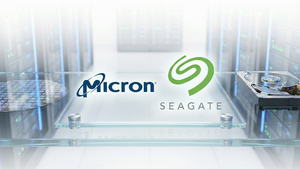Cary, NC, June 18, 2025 (GLOBE NEWSWIRE) -- AI reigned supreme at Cisco Live 2025, as organizations collectively acknowledged that the rise of AI is requiring significant changes to data center operations. INE, a leading global provider of networking training and certification prep, is releasing its analysis of the top themes to emerge as key takeaways from the conference. Cisco Live, held June 8-12 in San Diego, drew more than 22,000 IT professionals to discuss, debate, and innovate the growing overlap between AI, network security, and enterprise infrastructure.
“The conference highlighted a critical inflection point for the industry. Organizations are no longer asking whether they should adopt AI, but rather how quickly they can do so while maintaining security and performance standards,” said Rohit Pardasani, INE Networking Instructor and 5X CCIE. “This shift has created an intense focus on network security training and workforce development that really dominated the conference.”
Top Five Themes from Cisco Live 2025
1. "Agentic AI" Becomes the New Industry Buzzword
The shift from traditional AI assistance to autonomous AI agents that can complete entire workflows without human intervention was a consistent talk track throughout the five-day conference. The consensus among IT leaders was clear: the industry is moving beyond chatbots and simple automation toward AI that can think and act independently. Cisco's President and Chief Product Officer Jeetu Patel declared this "the agentic era of AI" during keynotes. Agentic AI dominated keynotes, breakout sessions, and hallway conversations as attendees are grappling with what the seismic shift means for their organizations.
"From a technical standpoint, what we're seeing is a convergence that I haven't witnessed since the early days of IP networking,” added Pardasani. “Cisco's introduction of AgenticOps and the Deep Network Model represents more than just another management platform; it is fundamentally changing how we think about network intelligence. The fact that they're embedding LLMs directly into network operations means we're moving from reactive troubleshooting to predictive infrastructure management."
The skills gap in this area is already apparent, with many professionals seeking training in specialized areas like Automated AI Solutions on Cisco Infrastructure and Understanding AI and LLMs as a Network Engineer to develop the foundational knowledge needed to work alongside AI agents.
2. Security-First Architecture Takes Center Stage
Gone are the days of bolting security onto existing infrastructure as an afterthought. An overwhelming theme throughout the conference was that security must be embedded at every layer from day one. Cisco pointed to embedded security features within its networking infrastructure through enhanced Hybrid Mesh Firewall capabilities and Universal Zero Trust Network Access (ZTNA). Recent breaches were highlighted as examples of how zero-trust architectures are no longer optional but essential for organizations serious about AI adoption.
"The security integration is very significant,” said Pardasani. “When you look at Hybrid Mesh Firewall and Universal ZTNA being baked into the network fabric itself, rather than bolted on afterward, it signals a major architectural shift. We're talking about microsegmentation at wire speed with AI-driven policy enforcement. For network engineers, this means understanding not just routing and switching, but also how AI models interact with network telemetry streams."
This growing emphasis on integrated security has led to increased demand for comprehensive network security training that covers infrastructure security fundamentals. Many professionals are also looking for hands-on experience in both Red Team and Blue Team tactics to understand security from multiple perspectives and meet the growing demand.
3. The Great Network Performance Challenge
With AI workloads generating unprecedented bandwidth demands, conference discussions consistently returned to one critical question: "Is your network ready?" Technical sessions revealed that many organizations are hitting performance walls, with Cisco aiming to help enterprises bolster security and resilience as they power up compute-intensive AI workloads. This sparked intense interest in next-generation hardware solutions, including new 8000-series routers and optimization strategies that can handle the explosive growth in data center traffic.
“The performance requirements for AI workloads are forcing us to rethink everything we know about network design,” said Pardasani. “Traditional oversubscription ratios don't apply when you're dealing with GPU clusters that need consistent, low-latency connectivity for model training. The new 8000-series routers with Silicon One aren't just faster - they're designed for the deterministic performance patterns that AI requires. Engineers who understand both traditional networking and these new AI-centric design patterns will be invaluable."
The complexity of managing these high-performance environments is driving professionals toward training in Network Programmability and Automation, and even more specialized courses in Cisco Application Centric Infrastructure (ACI). These types of training help professionals to master automation frameworks and software-defined networking technologies that can dynamically adapt to AI workload demands.
4. Management Complexity Reaches a Breaking Point
Many IT professionals at the conference expressed frustration with managing dozens of separate dashboards and tools. A recurring theme was simplification, and attendees were hungry for unified platforms that could provide a single view across their entire infrastructure. This demand led Cisco to unveil its Cisco Cloud Control to “drive all its networking, security, and observability tools" from one place. Conversations in the expo hall frequently centered on reducing operational overhead and streamlining workflows.
To address these challenges, many network professionals are turning to practical courses in Network Programmability & Automation and Practical Python Cisco Network Automation to develop the scripting skills and automation tools needed to integrate multiple management platforms and reduce operational overhead through Infrastructure as Code (IaC) approaches.
5. Skills Gap Anxiety Drives Certification Urgency
Perhaps the most urgent theme was the growing concern about workforce readiness. Conference attendees openly discussed their struggles to find talent with AI infrastructure skills. The emerging message was clear: traditional networking knowledge alone is no longer sufficient in the AI era, with organizations seeking expert-level professionals who can design and implement complex enterprise solutions.
This skills shortage is driving increased interest in comprehensive certification programs that keep pace with vendor roadmap updates, particularly expert-level training including CCIE certification preparation across multiple tracks (Enterprise Infrastructure, Security, Data Center, Collaboration, and Service Provider).
About INE
INE is the premier provider of online networking and cybersecurity training, cybersecurity certifications, and Cisco training and certification prep. Harnessing a powerful hands-on lab platform, cutting-edge technology, a global video distribution network, and world-class instructors, INE is the top training choice for Fortune 500 companies worldwide for networking training in business and for IT professionals looking to advance their careers. INE’s suite of learning paths and preparation for professional IT security certifications offers an incomparable depth of expertise across networking, cybersecurity, and cloud, and is committed to delivering advanced technical training while also lowering the barriers worldwide for those looking to enter and excel in an IT career.

Kathryn Brown INE 917-715-0911 kbrown@ine.com







